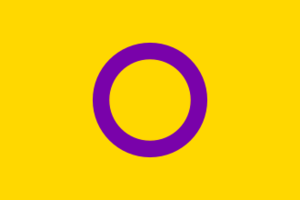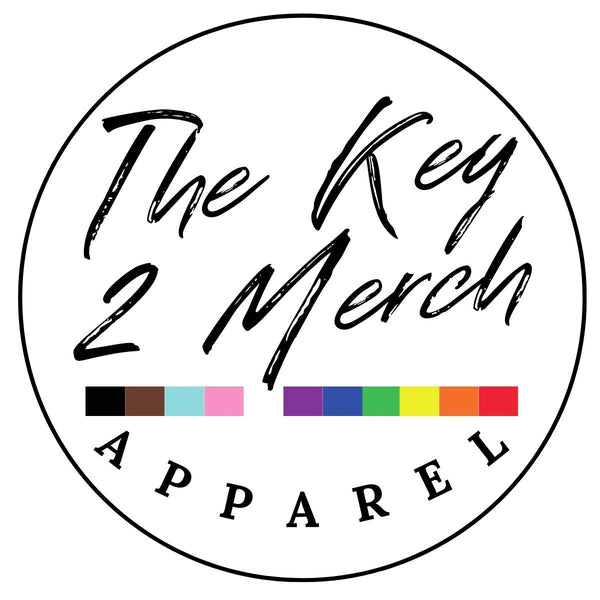Which Pride Flag Are You?
Pride history is rooted within the flags that have emerged throughout the years. Expanding as we grow and learn more about ourselves and how each individual wants to be represented to the world.
History of the different pride flags, showing the different pride flag colors.
1978. The original 8 color flag
This is the pride flag that started it all. Gilbert Baker created this flag and gave a meaning to each color, Which one is your favorite?
1979. The origin of the 6 color flag
The most popular of the pride flags, easiest to use/find for a universal meaning for the LGBT community.

By 1979, circumstances made it necessary to modify the flag again. When hung vertically from the lamp posts of San Francisco’s Market Street, the center stripe was obscured by the post itself. Changing the flag design to one with an even number of stripes was the easiest way to rectify this, so the turquoise stripe was dropped, which resulted in much celebrated six stripe version of the flag — red, orange, yellow, green, blue, and violet.
Cited from :https://gilbertbaker.com/rainbow-flag- color-meanings/
I want to highlight one of our pride t-shirts are universal no matter which flag you choose, LGBTQIA Rights.
The Bisexual Pride Flag
Michael Page designed the bisexual flag to bring more visibility to the bisexual community.

The pink portion represents the stereotype for women and the blue represents men. While purple is what color they are together, symbolizing the people who identify as Bisexual.
The Pansexual Pride Flag
The Pansexual Pride flag was computer-generated in 2010. The three-stripe flag uses colors to represent pansexuality’s interest in all genders as partners.

As well as increasing the visibility and recognition of the pansexual community, the pride flag also helps to distinguish it from bisexuality. The choice of color in this case symbolizes that pansexuals have romantic attractions and relationships with people of different genders and sexualities, including androgynous, agender, bigender, and genderfluid people.
The Transgender Pride Flag
In 1999, a trans woman, Monica Helms, designed the transgender flag. It flew for the first time at a Pride Parade in Phoenix in 2020. The 5-stripe flag has a white stripe in the middle to represent those who are transitioning.

According to Helms, the flag is symmetrical, so “no matter which way you fly it, it is always correct, signifying us finding correctness in our lives.”
Looking for inclusive Transgender clothing, check this out.
The Lesbian Pride Flag
Lesbian Pride Flag — The original was a red kiss superimposed on six shades of red and pink colors and a white bar in the center was introduced in a weblog in 2010. It was modified by removing the kiss
Color meanings: In its current iteration, the shades of red and orange represent gender nonconformity, independence, and community; the white stripe represents a unique relationship to womanhood; and the shades of pink represent serenity and peace, love and sex, and femininity
The Asexual Pride Flag
Also created in 2010, the asexual flag takes inspiration from the Asexual Visibility and Education Network logo.

The flag consists of four horizontal stripes: black, grey, white, and purple from top to bottom. The black stripe represents asexuality, the grey stripe representing the grey-area between sexual and asexual, the white stripe sexuality, and the purple stripe community.
Our HUMAN Tee is another one of our LGBT pride T-shirts.
The Demisexual Pride Flag
Sadly, like many LGBTQ+ flags invented in the internet era, it is unknown when or by who the demisexual flag was created, but we can assume it was created after the asexual pride flag (created in 2010) as it uses the same colors.
A demisexual is someone who only experiences sexual attraction to people with whom they have close emotional connections. For demisexuals, sexual attraction can only come after an emotional bond has formed.
Cited from : https://queerintheworld.com/demisexual-pride-flag/
The Genderfluid Flag
The Genderfluid Pride Flag was created in 2012 by JJ Poole(they/them), an agender pansexual from New York state who advocates for people who do not fit into heteronormative society. They designed it to encompass all gender identities, and as such, the genderfluid flag has five horizontal stripes and five colors.

The colors are:
Pink for femininity.
Blue for masculinity.
Purple for femininity and masculinity.
Black for lack of gender.
White for all genders.
The Genderqueer Pride Flag
Marilyn Roxie created the genderqueer flag in 2011. It incorporates lavender to highlight androgyny, white for agender identities, and green to represent nonbinary people. For those who feel that the term queer is a slur, the flag is often referred to as a nonbinary flag.

The Non-Binary Pride Flag
Kye Rowan created the Non-Binary Pride Flag in 2014. The flag has yellow, white, purple, and black horizontal stripes. This flag represents non-binary people who don’t feel represented by the genderqueer flag.
– Yellow stands for people whose gender doesn’t exist within the binary.
– White represents people with all genders or many genders.
– Purple stands for people with genders that may be a mix of female and male.
– Black represents people that identify as not having any gender at all.

The Intersex Pride Flag
One of the newer flags to represent more individuals uniquely.

Although not all intersex persons identify as non-binary, some do! Intersex is a general term used for a variety of conditions in which a person is born with an anatomy that doesn’t seem to fit the typical definitions of female or male.
The intersex flag is yellow with a purple circle. The circle is described as "unbroken and unornamented, symbolising wholeness and completeness, and our potentialities.” The colors yellow and purple are used to symbolize non-binary gender and the combination of both masculine and feminine genders.
The Straight Ally Flag
With every movement or progress there are allies that help move it forward. We have to be thankful for those that fight for groups of people who are trying to be suppressed because it is the right thing to do. Kindness is free and a simple act that takes nothing away from another person.

Unknown who made or designed the straight ally flag. However, what is known about it is that it was first used in the 2000s. The straight ally flag was created by combining the LGBTQ pride flag and the straight flag.
The straight ally flag doesn’t have the original LGBTQ pride flag colors made by Baker. This flag only uses the more modern six-colored flag without pink and turquoise. The straight ally flag represents unity and support towards the LGBTQ community.
Here’s what the straight ally flag means:
The letter ‘A’ means ally.
The black and white stripes represent the straight flag.
The rainbow colors in the letter ‘A’ are for the LGBT community.
The Progress Pride Flag
Another very popular style, almost as popular as just the 6 color rainbow flag, you will find this flag almost everywhere. It does its best to represent the LGBT community as whole.

Daniel Quasar, who identifies as nonbinary and queer, sought to take Philadelphia’s approach to inclusion a bit further. He designed the progress Pride flag using even more colors. He added white, pink, and light blue to represent the transgender population and used brown and black stripes to represent people of color who had been lost to AIDS. Quasar explained that he desired to create a flag with even more meaning by including trans stripes and the black and brown stripes.
The Intersex-Inclusive Progress Pride Flag
The flag we try to use when representing our community as a whole. Intersex columnist and media personality Valentino Vecchietti designed the new rendition of the rainbow Pride flag. The flag was officially unviled by the advocacy group Intersex Equality Rights UK in late May, but has since spread virally on social media.
In Vecchietti’s rendition, a purple circle superimposed over a yellow triangle has been added to the chevron on the left half of Quasar’s design — an homage to the popular 2013 intersex flag designed by Australian bioethecist and researcher Morgan Carpenter.
If you can't find the pride flag for you or we have forgotten one, please contact us as we want everyone in our community to feel included.
Written By: Kristyn Bradley, Co Owner of The Key 2 Merch


